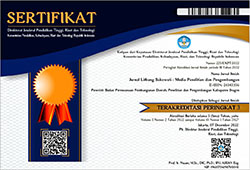PERBANDINGAN TINGKAT KEBAHAGIAAN ANTARA GENERASI SANDWICH DAN NON-GENERASI SANDWICH
DOI:
https://doi.org/10.32630/sukowati.v6i1.254Keywords:
happiness, sandwich generation, subjective well-beingAbstract
The indicators of population welfare are not only measured in monetary terms but also in subjective well-being or happiness. Research on happiness has been done a lot, both in developed and developing countries. However, no research discusses the happiness level of the sandwich generation. This study aims to determine the differences in happiness between the sandwich generation and the non-sandwich generation based on the number of family members covered, leisure time, health conditions, and monthly household income. This research was conducted by collecting data on two groups: sandwich generation and non-sandwich generation, consisting of 158 survey respondents in 4 provinces in Indonesia: Special Capital Region Jakarta, Aceh, West Java, and Central Java, and three in-depth interview informants. This study combines the quantitative method (path analysis regression) and the qualitative method (in-depth interview). The findings in the study are: (1) There is no difference in the level of happiness between the sandwich generation, and non-sandwich generation, (2) Variables that directly affect happiness are health and income, while the number of family dependents and leisure time has no direct effect, (3) The existence of parents in the extended family is not considered as a burden for the sandwich generation.
Downloads
Published
How to Cite
Issue
Section
License
Copyright (c) 2021 Ferlistya Pratita Rari, Jamalludin Jamalludin, Putri Nurokhmah

This work is licensed under a Creative Commons Attribution 4.0 International License.


















